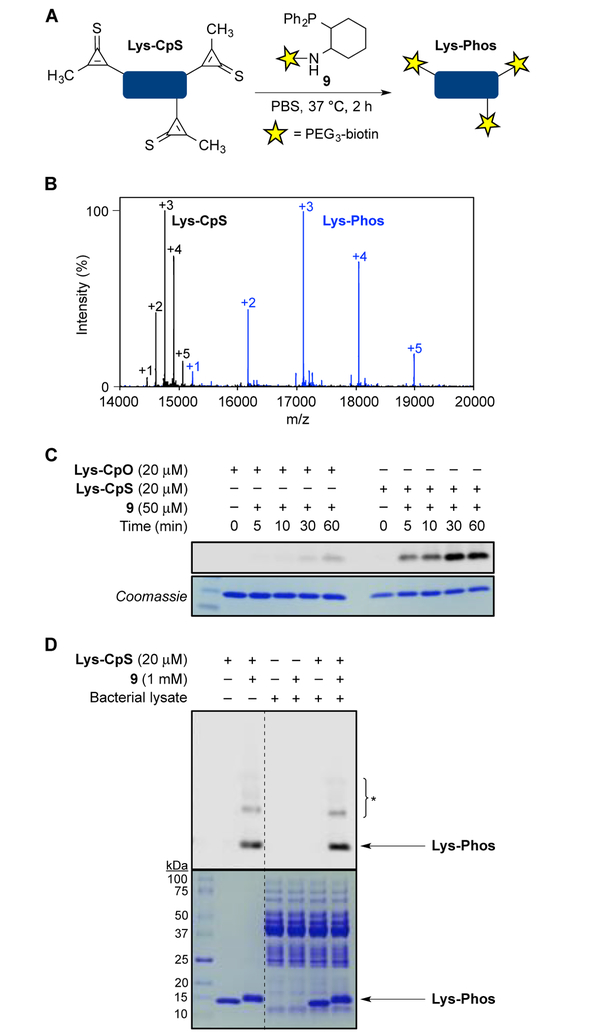Figure 3.
Cyclopropenethione conjugates are readily ligated in vitro and in cell lysate. A) Lys-CpS samples were treated with a phosphine-biotin probe. B) Lys-CpS (20 μM, 1–5 modifications) was incubated with phosphine-biotin probe 9 (500 μM), and the reaction was monitored by ESI mass spectrometry. Deconvoluted mass spectra are shown. Full conversion to the expected products (Lys-Phos, 1–5 modifications) was observed. C) Lys-CpS and Lys-CpO (20 μM) were reacted with phosphine 9 (50 μM) for 0–60 min at 37 °C. Covalent adducts were detected via Western blot with streptavidin staining (top). Coomassie staining was used to assess protein loading (bottom). D) Lys-CpS (20 μM) was incubated with 9 (1 mM) in bacterial lysate for 1 h at 37 °C. Covalent adducts were detected via Western blot with streptavidin staining (top). Coomassie staining was used to assess protein loading (bottom). *Protein impurities present in commercial lysozyme stock.

